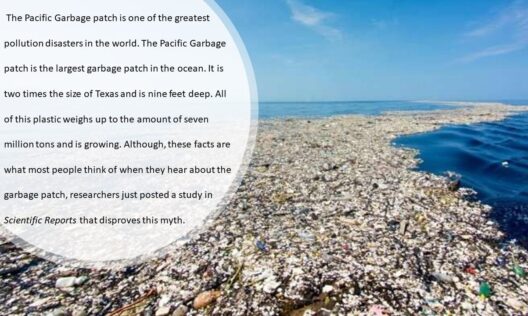Biologists play a pivotal role in understanding the intricate relationships within ecosystems, and this knowledge profoundly impacts the ways in which energy conservation can be approached. As society grapples with the urgent need for sustainable practices, the innovative strategies derived from the biological sciences have begun to shift the paradigm of energy conservation. Exploring how biologists discover new ways to conserve energy reveals a landscape rich with promise and ingenuity.
At the core of energy conservation lies the understanding of energy flow within biological systems. Photosynthesis, for instance, exemplifies the most fundamental energy conversion process. Plants efficiently transform sunlight into chemical energy, which subsequently sustains entire ecosystems. By studying photosynthetic organisms, biologists glean insights into optimizing these natural processes, leading to innovative approaches in energy conservation. Advances in genetic engineering, particularly in crops, have the potential to enhance photosynthetic efficiency, ensuring that they utilize sunlight more effectively than their predecessors.
Biologists are not confined to terrestrial ecosystems; aquatic environments are equally pivotal in the discourse of energy conservation. Marine biologists have explored the fascinating world of phytoplankton, the microscopic organisms that produce oxygen and absorb carbon dioxide. As the foundation of the aquatic food web, phytoplankton are vital to maintaining ecological balance. Research has revealed that enhancing phytoplankton growth can lead to increased carbon sequestration, allowing marine systems to absorb greater amounts of atmospheric carbon. This not only highlights the critical role of these organisms in climate mitigation but underscores their potential in energy conservation strategies.
Beyond basic biological processes, the concept of biomimicry emerges as a significant avenue through which biologists inspire energy-efficient technologies. By observing nature’s time-tested strategies for energy conservation, engineers and designers can create innovative solutions that minimize energy use. For instance, the study of termite mounds has inspired the development of energy-efficient buildings. These mounds maintain stable internal temperatures through natural ventilation systems, drastically reducing the energy required for heating and cooling. Thus, the intersection of biology and engineering not only conserves energy but also signifies a harmonious adaptation of human technologies inspired by nature.
The role of biologists extends into the realm of biodiversity conservation, which is implicitly tied to energy conservation. Biodiversity enhances ecosystem resilience, enabling systems to adapt to disturbances without significant energy expenditure. When ecosystems are rich in diversity, they can efficiently recycle nutrients and utilize available energy without depleting resources. Biologists are instrumental in devising conservation strategies that protect these biodiverse systems, thereby ensuring long-term sustainability. Efforts to conserve habitats, restore degraded ecosystems, and implement sustainable land-use practices underscore the necessity of preserving biological diversity as a cornerstone of energy conservation.
Moreover, the study of metabolic pathways within organisms offers key insights into energy conservation techniques. Research into microbial metabolism has unveiled the potential for biofuels derived from waste products. Biologists investigate how certain bacteria can convert organic waste into energy-rich fuels, thereby addressing two pressing issues: waste management and energy production. These discoveries pave the way for more sustainable energy alternatives, reducing reliance on fossil fuels and contributing to a circular economy. The potential implications of such research promise not just energy savings but also a reimagining of our waste products as valuable resources.
In addition to focusing on plants and microbes, biologists also explore the behavioral aspects of energy conservation. Animal behavior studies reveal fascinating insights into how various species adapt their energy expenditure according to environmental conditions. For example, certain birds will alter their foraging techniques to maximize energy efficiency during harsh weather. By understanding these behaviors, biologists can propose conservation strategies that promote habitats supporting energy-saving practices among wildlife. This emphasis on behavioral ecology showcases the intertwined nature of energy conservation and species survival.
Equally significant is the role of education and outreach in fostering a culture of energy conservation. Biologists often serve as educators and advocates, raising awareness about the importance of conserving energy and protecting ecosystems. Their research findings not only inform policy decisions but also inspire community initiatives aimed at promoting sustainable practices. Workshops, public lectures, and community-driven conservation projects highlight the necessity of collective action in achieving energy conservation goals. By cultivating curiosity and respect for nature, biologists effectively enhance public engagement, which is crucial for driving change.
As we contemplate the future, the advances in biological research promise transformative potentials for energy conservation. Biotechnological innovations, conservation strategies targeting biodiversity, and behavioral insights can collectively create pathways to a more sustainable energy future. The exploration of new methodologies ranging from gene-editing in plants to the utilization of waste for energy generation exemplifies how biologists are navigating uncharted territories in energy conservation. This burgeoning field invites us to reconsider our relationship with nature, urging a shift in perspective where conservation is not merely a need but a shared responsibility. Piquing curiosity about the interconnectedness of life can fuel the enthusiasm necessary for widespread change towards energy sustainability.
In conclusion, biologists hold the key to unlocking innovative strategies for conserving energy on multiple fronts. By examining natural processes, pursuing biomimetic designs, protecting biodiversity, and educating communities, they are pioneering efforts that redefine what it means to conserve energy. The synergy created by merging biological insights with energy practices reveals a vision that is achievable, sustainable, and essential for our future. As we stand on the precipice of change, fewer barriers exist than ever before; the collaborative efforts of biological sciences and the commitment to uphold these principles may well illuminate the path forward.







